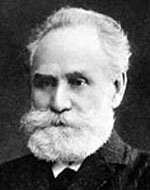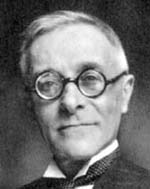Approaching History
GradualnessAs the leisurely approach recommended on previous pages will already suggest, history cannot be done fast. Even its discoveries, its Eureka moments, may be only highlights in a process with more than one stage. Consider these examples:
- As Polya makes plain, some problems cannot be solved in one jump. One sometimes aims instead at an intermediate result, a lemma. The lemma is not the answer; it is an intermediate position from which the answer can more easily be obtained. It helps to keep this "lemma" concept in mind in the less easily visualized process of reaching historical understanding. If you can shave a little off the original problem, or reduce its area of uncertainty, and especially if you can put what is left of the problem into a form more easily attackable, you are doing very well indeed.
- Many industrial processes don't operate once on a body of material and then stop. They repeatedly process that material, as in the purification of uranium by successive gaseous diffusions. Nor does your dentist drill out a root canal in one pass. Hypotheses in history can be like that. You arrive at an arrangement for some data. By working with that arrangement as though it were true (by testing it in practice) you see its shortcomings, and produce a better arrangement. You are not going in circles, but in spirals. Each spiral ends higher up than the last. Such spiral progress is not grounds for frustration. You are on the track.
Understanding increases as one goes through these stages. What was diffuse gets clearer. What was jumbled begins to assume a shape. It was this process of progressive understanding, and not mere Sitzfleisch, that Pavlov had in mind in his advice to future scientists:
What can I wish to the youth of my country who devote themselves to science? Firstly, gradualness. About this most important condition of fruitful scientific work I can never speak without emotion. Gradualness, gradualness, gradualness . . . never begin the subsequent without mastering the preceding . . . But do not become the archivist of facts. Try to penetrate the secret of their occurrence, persistently searching for the laws which govern them.
Vincent puts it succinctly for the working historian:
The more one knows about a subject, the more he will appreciate the quality and significance of documents as they come into view. It is the experience of every investigator that he began to see things only after he had been some time at work.
Unthinking persistence is a career error. But much work in history, by its nature, needs persistence. Historical investigations require large amounts of data simply to get started. And once they do get started, they take time. Even the more tractable problems need a steady application of mind to the available material. Sometimes they require the energetic pursuit of further material:
Griesbach, who laid the foundations of the study of New Testament manuscript variants, did not merely analyze the versions he possessed, letter by letter. That too, of course. But he also spent years in the monasteries of Europe uncovering new manuscripts, not only in Latin and Greek, but in Gothic, Armenian, and Syriac. This is not the work of a weekend, or a hundred weekends; it is work sustained over decades.
The quality of seeing something through, of being thorough (Gm durchgreifend), is one that the historian needs. Shackleton showed it when he brought his crew back alive from a miscarried Antarctic expedition. Historians work indoors. They do not need to sail with Shackleton, in a small boat, through storm and ice, looking for the landfall that would mean life for those left behind on an icebound island. But they do need determination. Not in spurts and spasms, but extended over time.
The End of Gradualness
Still, there must be a limit. You might find more by continuing, as Hadamard tells it:
Some years later, I was interested in generalizing to hyperspace the classic notion of curvature of surfaces. I had to deal with Riemann's notion of curvature in hyperspaces, which is the generalization of the more elementary notion of a surface in ordinary space. What interested me was to obtain that Riemann curvature as the curvature of a certain surface S, drawn in the considered hyperspace, the shape of S being chosen in order to reduce the curvature to a minimum. I succeeded in showing that the minimum thus obtained was precisely Riemann's expression; only, thinking of that question, I neglected to take into consideration the circumstances under which the minimum is reached, i e, the proper way of constructing S in order to reach the minimum. Now, investigation would have led me to the principle of the so-called "Absolute Differential Calculus," the discovery of which belongs to Ricci and Levi-Civita (Hadamard Psychology 51).
And the tensor calculus of Ricci and Levi-Civita was the essential mathematical tool for the discoveries of Einstein. Those were heady days for mathematics.
But though Hadamard was capable of going on to that discovery, as he here remarks with some chagrin, he might also have delayed the publication of what he did find, while pushing on to the second goal, a goal which, for that matter, he might perhaps never have reached. So, show what you have. It is only right to leave something for the next generation to do. Here is a fable from the 03rd century:
The King of Chu lost his bow. He said, "A Chu man lost it, and another Chu man will find it. What exactly is the problem?"
That shows a fine appreciation of when to cease caring. The torch has passed, the problem is in other hands. An end of concern, a cessation of interest in the problem, often follows upon the reaching of an answer to the problem. One's emotional state at such moments is not invariably pleasant; in fact, a parallel is sometimes drawn with postpartum depression.
One might expect the feeling after an achievement to be one of satisfaction. Instead, as artists also report, it may be ennui or even revulsion. Paul Valery was once asked how he handled this reaction. He answered:
"Je divorce."
The disengagement of the affections. Proust has described the same process, though at much greater length, in his sketch La Fin de la Jalousie.
Readings
- George Polya. How to Solve It. Princeton 1945
- Marcel Proust. Les Plaisirs et les Jours. 1896, variously translated.
17 Mar 2006 / Contact The Project / Exit to Outline Index Page

